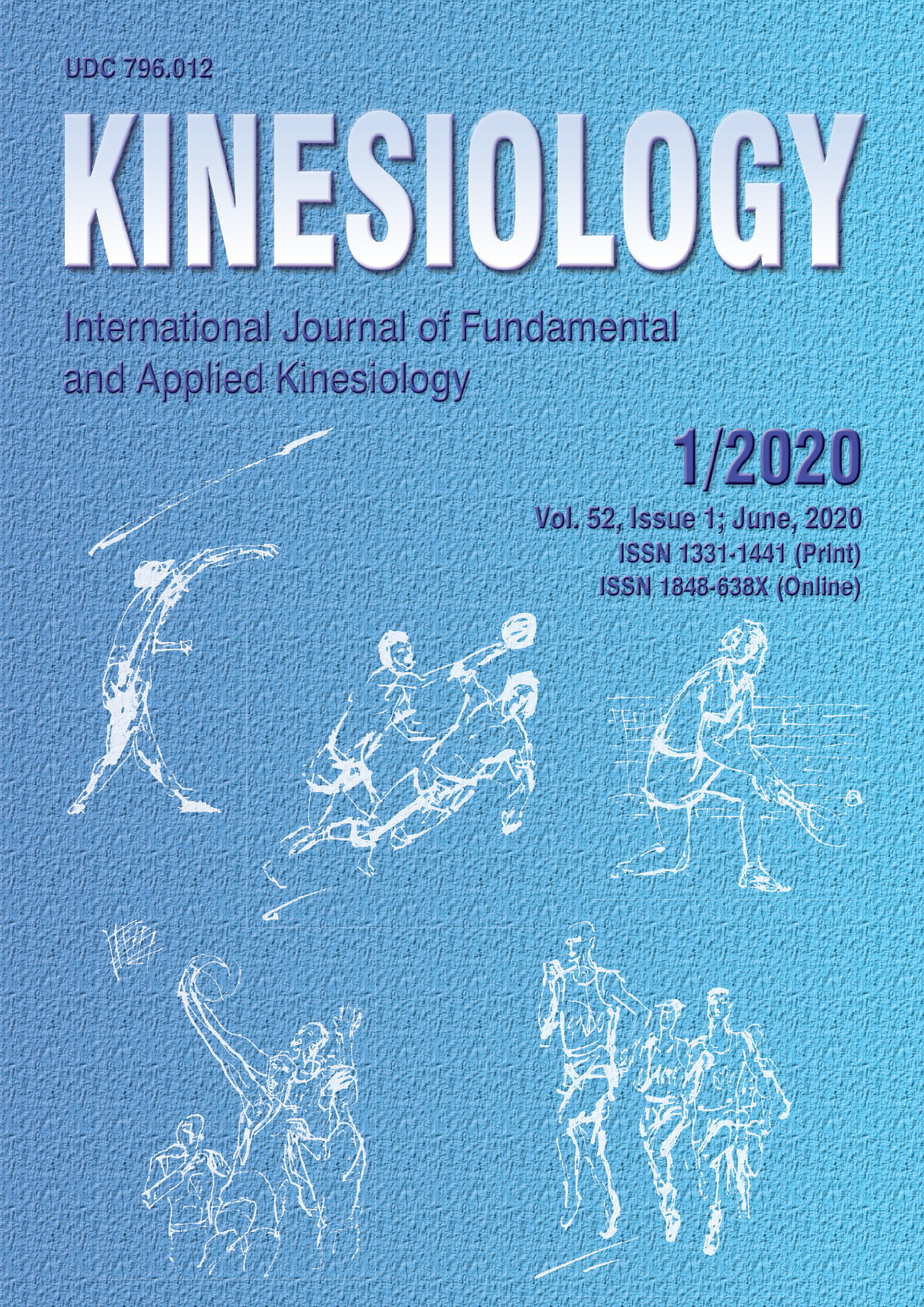LOWER BODY PEAK FORCE BUT NOT POWER IS AN IMPORTANT DISCRIMINATOR OF ELITE SENIOR RUGBY LEAGUE PLAYERS
STRENGTH DISCRIMINATES SENIOR LEAGUE PLAYERS
Abstract
This investigation determined differences in lower body strength and power between elite junior (17-20 years) and elite senior (open-aged) rugby league athletes. Twenty junior and 25 senior athletes performed an isometric mid-thigh pull, countermovement jump, repeated jump, and broad jump tests during a National Rugby League pre-season. The effects of age (junior vs. senior) and position (adjustables vs. hit-up forwards vs. outside backs) on test results were investigated using a two-way analysis of variance. Cohen’s d effect sizes (ES) and 95% confidence intervals were calculated for pairwise comparisons. Isometric mid-thigh pull absolute peak force was greater for senior players compared to junior players (ES=0.88, p < 0.05). Countermovement jump absolute peak power was greater for outside backs (ES=1.12) and hit-up forwards (ES=1.23) compared to adjustables (p < 0.05), greater for senior outside backs compared to junior outside backs (ES=1.53, p < 0.05) and greater for junior hit-up forwards compared to senior hit-up forwards (ES=1.00, p < 0.05). This research demonstrated differences in strength and power of rugby league athletes between playing age and position. Improving lower body strength should be prioritised for athletic development of junior rugby league athletes, with consideration given to requirements across different playing positions.
Downloads
Published
How to Cite
Issue
Section
License
Copyright (c) 2020 Kinesiology

This work is licensed under a Creative Commons Attribution-NonCommercial 4.0 International License.
At Faculty of Kinesiology we recognize that access to quality research is vital to the scientific community and beyond. Kinesiology is non-profit journal and all costs of publishing and peer review process are covered by the publisher itself or other funding sources like Ministry of Science and Education of the Republic of Croatia. Full text papers are also available free of charge at http://hrcak.srce.hr/kineziologija. There are no restrictions on self archiving of any form of paper (preprint, postprint and publisher's version).
Articles are distributed under the terms of the CC BY - NC 4.0
Kinesiology does not charge any fees to authors to submit or publish articles in our journal.


